Pest prevention and management for cannabis plants
List of contents
At this time of year, when summer and hot temperatures are comming, a number of mesures should be take in order to avoid pests in your plants, especially if these have not been taken during the rest of the year and whatever type of cannabis strain you're growing. Indeed, most insect pests attack indoor grow rooms during summer in a cyclical and predictable manner, when temperatures raise and relative humidity often drops. Thus, the reproduction of insects like red spider mites, thrips and white flies reaches its peak during this period, so using a pest prevention and control plan is highly recommended to ensure optimal growing conditions for your plants.
On the other hand, and if you're growing outdoors or in a greenhouse, this is also an excelent moment to start this type of treatments. You should then start a prevention plan to ensure that your plants will show their full potential in a few weeks, when the bloom phase begins. Plants should be always clean from pests or diseases before entering the flowering period if highest yields and quality are to be achieved, no matter what growing systems you're using.
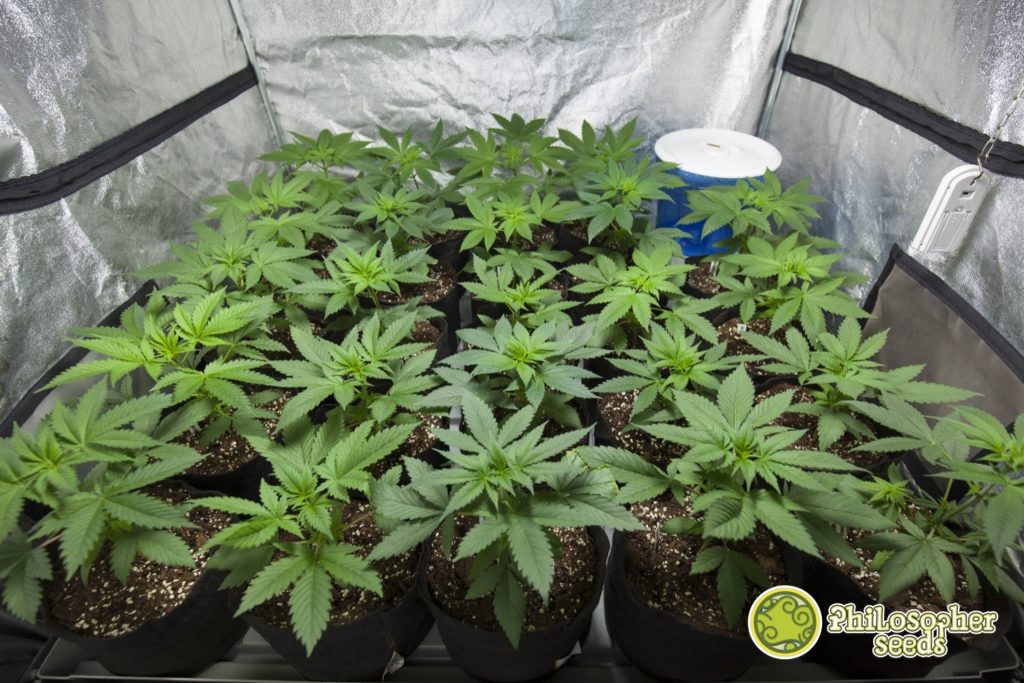
Next we'll tell you how to prevent the most commonly found pests in marijuana plants, as well as which are the most popular products to control and manage both insect pests and fungal infections. As always, Philosopher Seeds recommend using natural, environmentally friendly products (especially if you're growing outdoors), although we'll also present some chemical compounds to efficiently eradicate any of these pests.
Pest prevention for indoor cannabis plants
Although these may seem basic aspects for the experienced grower, let's recall some of the things you can do to avoid problems with pests in your indoor grow room during the hottest months of the year. As mentioned above, spider mites, thrips and white flies are usually the most common pests at this time of year.
- Hygiene in grow rooms: Hygiene is essential to avoid pests and diseases in your plants. Removing any rest of dead plant material and keeping the environment clean (trays, containers, etc) should be done periodically. Also, removing the lower branches is recommended to improve aireation and get rid of the first insects, which most times attack the lower parts of the plants first.
- Temperature and humidity: Temperature and humidity must be kept at certain levels to avoid either the reproduction of insects or fungal diseases. Using air conditioning, cool tubes (air cooled reflectors), improving the ventilation system (take caution with RH drops), using LED panels or CFL lamps or using cold-vapour humidifiers are some of the things you can do to keep these levels under control. You can also put some anti-thrips netting in every air intake/outtake so these insects can't enter the grow space. Increasing the watering frecuency may also help to avoid dehydration by the plants; weak, dry plants are much more prone to be infected.
- Choosing the correct strain to grow indoors: It is crucial if you want to successfully harvest your plants, especially if you're growing indoors. You must choose strains naturally resistant to pests, like Heaven's Fruit or Easy Haze. In this way, many problems can be avoided from the very beginning, since any of the insects mentioned in this article can devastate your plants in much less time than that needed to complete the bloom phase. Furthermore, as often happens, you'll also increase the chances to harvest without problems by choosing early flowering strains.
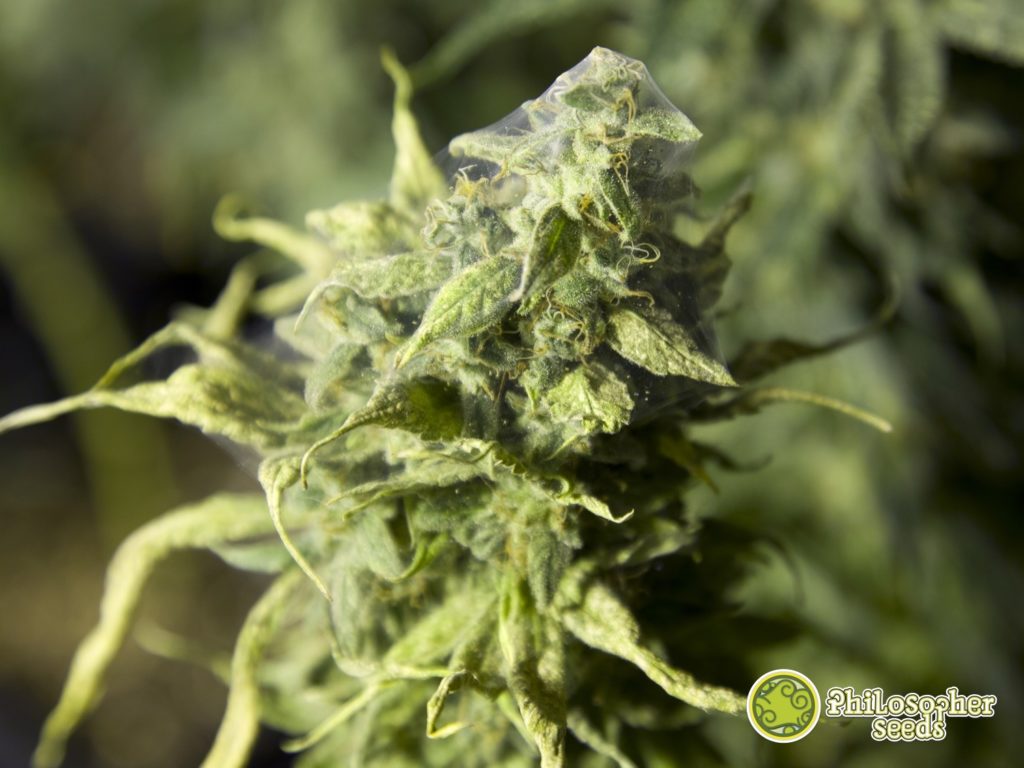
Pest prevention for outdoor cannabis plants
Bridging the obvious differences, preventive measures for outdoor plants are basically the same than we've seen for indoor grow rooms. Let's see now some of the main aspects to keep in mind when growing outside:
- Location: You must choose the sunniest and most ventilated spot. Do not put your plants too close to each other and keep them away from other plants that may attract pests (rose bushes, for example, are normally infected by aphids and powdery mildew). You can use some plants - mint, rosemary, wormwood, etc - which are natural insect repellents and put them between your cannabis plants. Of course, remove any dead plant material periodically.
- Temperature and humidity: Unlike indoor growing, there is not much one can do against natural climate conditions when growing outside. As we've already seen, choosing the correct spot for your pants - sunny and well ventilated - is crucial to keep temperature and RH at optimal levels. If temperatures raise too much, you can use some shade net to cover your plants (some growers build a cage with anti-thrip netting for their plants to keep insects away while decreasing the temperature a bit). Either outside or in greenhouses, proper ventilation is important to avoid moulds (dew formation) and control temperatures.
- Choosing the correct strain to grow outdoors: Besides what we've seed about choosing the correct genetics to grow indoors, in most climates and areas outdoor plants must also be resistant to fungal infections like botrytis or powdery mildew, also to specific insects like caterpillars (which in turn normally bring problems with botrytis). Thus, choosing strains resistant to moulds like Fruity Jack or Tropimango is essential to harvest your plants successfully. Fast flowering strains are favourite among outdoor growers for their easy cultivation and early harvest, which avoids the feared autumn rains. As you may know, our Early Maroc is one of the earliest strains on the cannabis seed market, and a true favourite for legions of outdoor farmers!
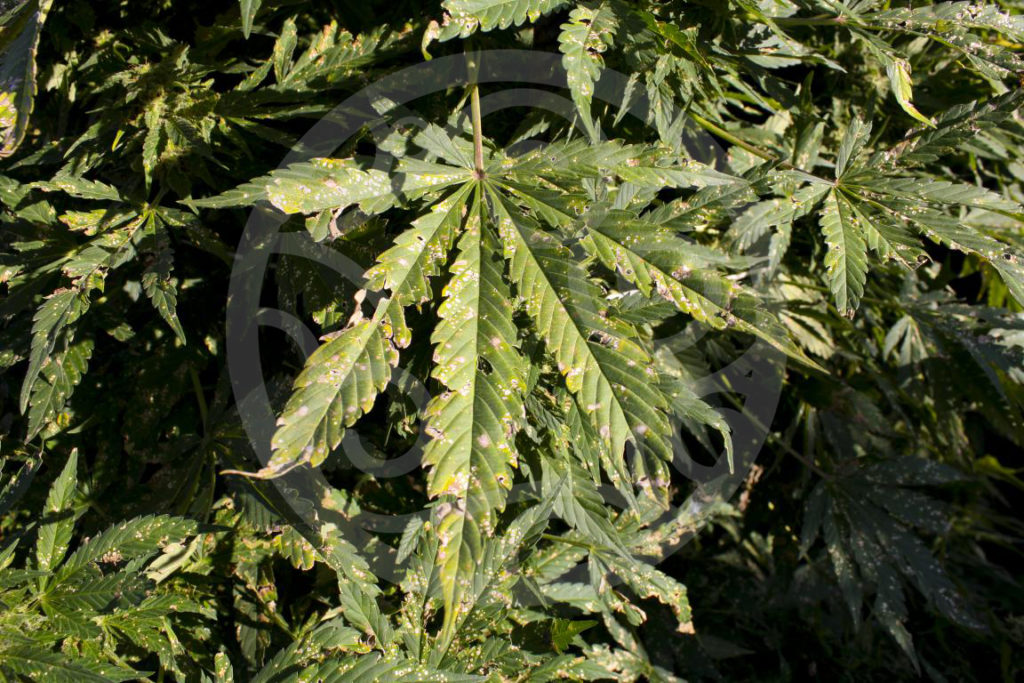
Natural products for pest control
We'll take a look now at the most commonly used natural products to prevent plant pests (we'll also see some chemical compounds used for this purpose). Note that there is a myriad of products on the market and homemade recipes for pest management, we'll just list some of the most popular, effective and easy to find ones. Also, keep in mind that a wetting agent greatly improves the properties of some of these products, as well as using RO water. Furthermore, some of them may degrade with light, so they must be used during periods of low light intensity.
- Neem Oil: Vegetable oil extracted from the seeds and fruits of the Neem tree. It is widely used as insecticide against spider mites, white flies, aphids or thrips, either larvae or adults. It is toxic to insects upon direct contact and it is used via foliar or in the irrigation water. It is also a good preventive product against moulds like botrytis, mildew or rust. It can be used along with other insecticides like potassium soap. Do not use within 15 days prior to harvesting your plants.
- Potassium soap: Made from potassium salts, it is used to treat insects like white flies, aphids, thrips or mealybugs. It acts when touching the insect and can be used until one week before harvest.
- Cinnamon extract: Extract made from the inner bark of the cinnamon tree. It is effective to treat a wide range of mites while promoting the regenerative and antioxidant activity of the plant, thus improving its defences against stress sources. It is also used to treat infections of powdery mildew. Do not use within 10-15 days prior to harvesting your plants.
- Chrysanthemum extract: Also called pyrethrins, this extract has been used since 1000 BC to treat infections of aphids, thrips, caterpillars, mealybugs or white flies. It can be used mixed with potassium soap to obtain a more potent product. It acts when touching the insect and can be used until 10 days prior to harvesting your plants. It is a photosensitive product, so use in hours of dark.
- Sulphur: Micronized sulphur can be used by either covering the plant with the powder or by using sublimators, which heat up the sulphur until reaching its sublimation point. It is used against insects and moulds, although only during the growth stage. It is then a wide spectrum preventive product, although you must be sure of what you're doing before using it.
- Copper: Also used to correct deficiencies of this nutrient and to promote the growth of the root system. There are a number of copper-based fungicides on the market to treat infections of botrytis, alternaria or rust, also several pathogenic bacteria. Use with low light intensity to maximize its effectiveness, and avoid using amino acids at the same time than copper.
- Propolis: It's a substance produced by bees to seal their hives. It has antibacterial and antifungal properties, used by many growers to prevent moulds like botrytis or powdery mildew. It also contains vitamins B, C and E and is an effective tissue regenerator (ideal for mother plants).
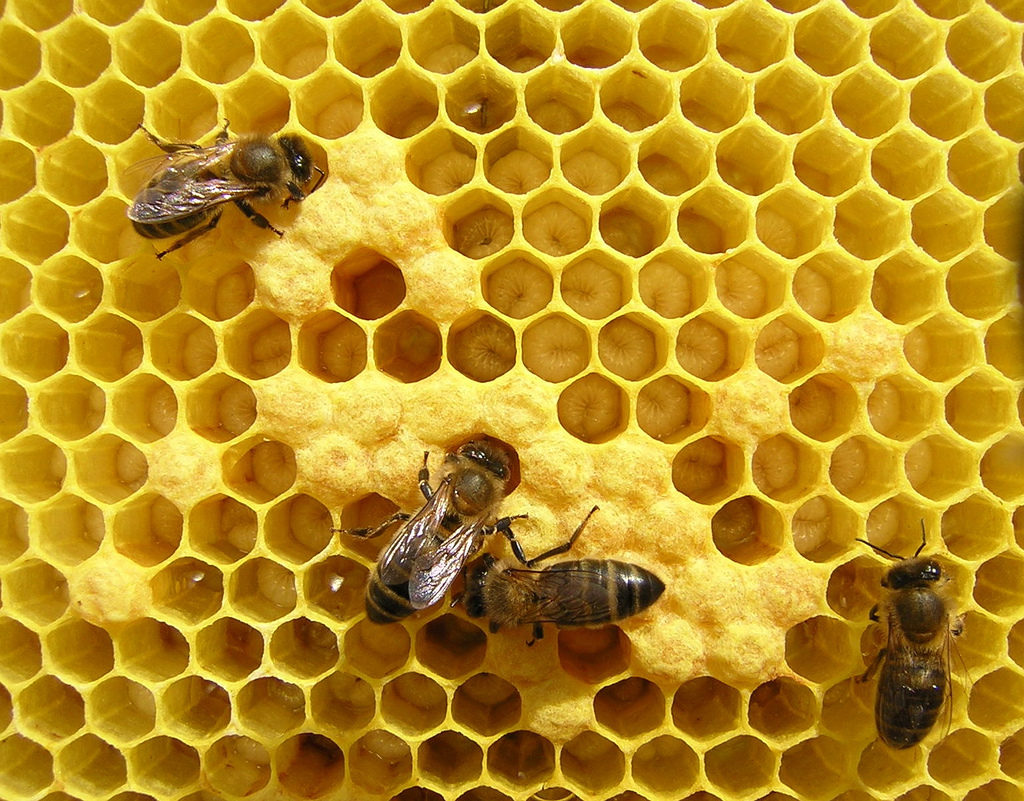
- Horsetail: Is an extract of equistaceae plants which contains saponin and flavonoids. It reinforces the structure of the plant and has antifungal properties. It is important to use it alone, without mixing with other products.
- Bacillus Thuringiensis: It is doubtless one of the most widely used products to prevent and treat caterpillars. This product prevents the insect from feeding from the plant. Thus, by using it you're also preventing botrytis infections, which often come together with caterpillars. It is important to start the treatment during the growth stage, especially if you're growing outside.
- Trichoderma: This beneficial fungi colonizes the root system of plants and protect them from harmful pathogenic fungi. It also promotes root development by improving the production of plant hormones. It is normally used by mixing it with the irrigation water and is effective to prevent fusarium, pythium or rhizoctonia among others. Since fungal infections in the root area are almost impossible to treat, using trichoderma as preventive is highly recommended.
- Natural predators: Besides this products, you can also use natural predators which feed on insects like spider mites or aphids. Insects like Phytoseiulus Permisilis (spider mites), Amblyseius Californicus (spider mites), Orius Laevigatus (thrips), Encarsia Formosa (white flies) or Aphidoletes aphidimyza (aphids) will help you to control diverse pests. Carefully check the instructions if you're plannig on using any of the aforementioned products together with predators.
- Chemicals: While we never encourage the use of chemicals, we understand that sometimes the grower has no other option. Please do not use these products unless strictly necessary, especially outdoors. We recommend using penconazole to prevent and treat powdery mildew, spiromesifen for spider mites, triazole fungicides for botrytis or powdery mildew, thialcropid for white flies or imidacloprid for thrips. We do not recommend to use these products during the flowering stage.
- Others: Of course, you can also prepare some of the many homemade recipes with mint, garlic, tobacco, etc., also use traps for insects or insect netting.
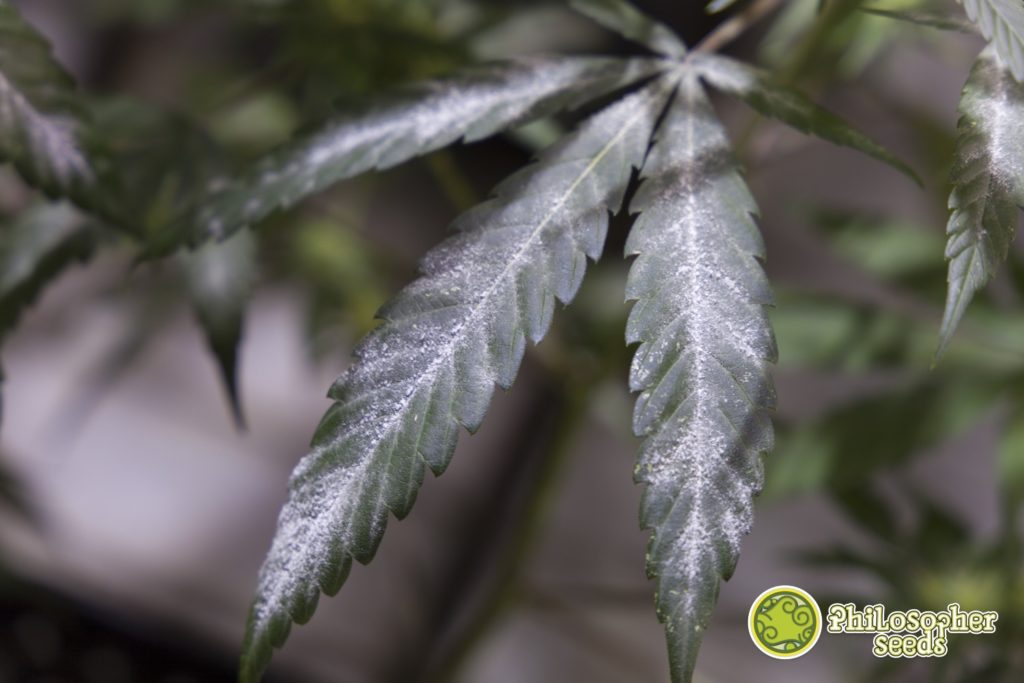
Prevention treatment for insects and cannabis
If your plants look healthy, with no signs of pests or nutrient imbalances, you must make sure that they'll stay healthy until harvest time. If you already know which are the most common pests in your area, you only have to used the suitable product to prevent them. The following is an example of a prevention plant for the most usually found pests in cannabis. Actually, most experienced growers follow a similar plan throughout the year whether they grow indoors or outdoors:
Growth stage:
- After each transplant, or every few weeks in case of mother plants, use trichoderma to reinforce the rot system of your plants
- Use some wide spectrum insecticide (neem , potassium soap or any of the mentioned in this article) once per week
- Spray your plants with water once every two weeks
- A couple of weeks prior to bloom, spray Bacillus Thuringiensis (if growing outside, use BT once per week during July and until you see the formation of the first buds
- Use horsetail one week before the start of the flowering period
Flowering stage:
- Use a wide spectrum insecticide the first day of bloom
- About 4 days later, spray your plants with propolis
- About 4 days later, use an insecticide again
- About 4 days later, spray your plants with some fungicide
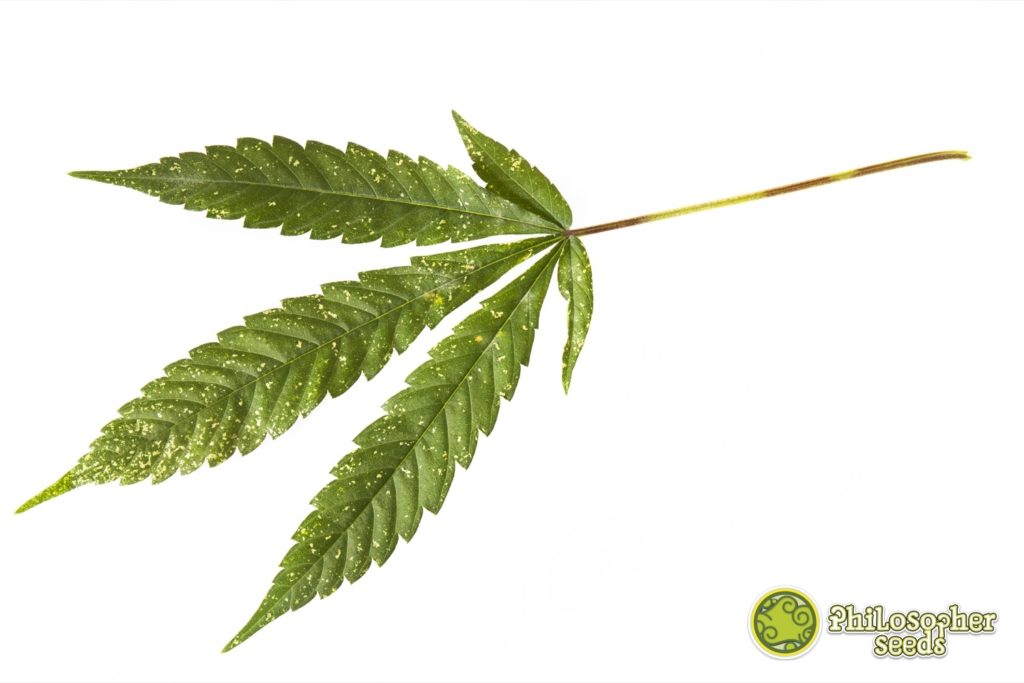
If you're growing indoors, we do not ever recommend to start the bloom period with plants showing signs of infections, no matter how small they are. We never use these products once into bloom, although some of them can be used without a problem. If you use them on budded plants, always try to spray only the leaves and keep the buds away from the product. Read carefully the instructions from the manufacturer. Avoid systemic products during the flowering stage.
We hope this article will help you get rid of insects and moulds in your plants, it is not in vain that most crop failures are caused by pests.
Happy harvests!






